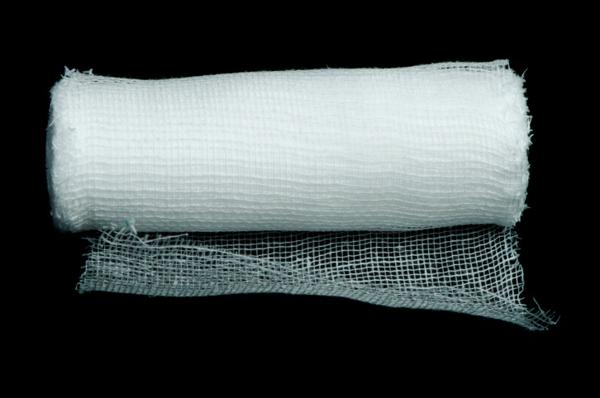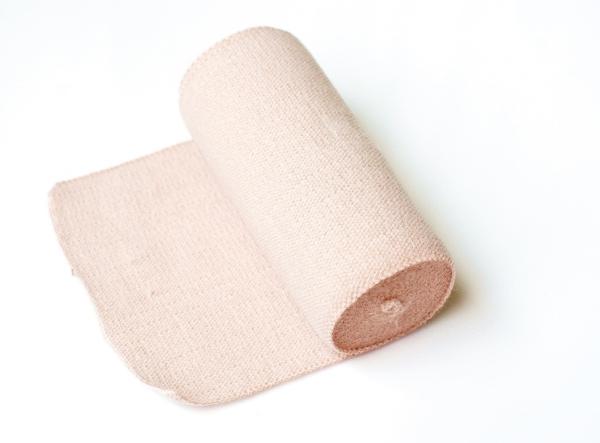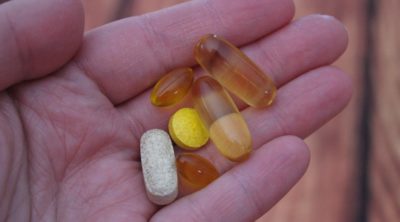
When it comes to providing superior protection to small wounds, what better way than applying a bandage. WellnessKeen enlists the different types of bandages that help heal a wound faster.
Did You Know?
Minor wounds such as cuts and scrapes heal more efficiently when they are covered with a bandage.
Bandages that are commonly used to protect wounds and support muscle and joint injuries, come in a variety of shapes and sizes. Whether you suffer from a sprain or an open wound, there are bandages for every type of injury. Applying the right type of bandage for a particular injury is necessary to reduce pain. Moreover, the bandage insulates the injury from any kind of germs that slow down the healing process. Many times, the recommended bandage restricts the mobility of the injured area, which helps facilitate healing. After examining the type and location of the injury, the doctor may suggest any of the following bandages.
Depending upon the size and shape of the bandages, they are classified into the following types.
Strip Bandages

When it comes to covering minor wounds on level surfaces, strip bandages are the first choice. Superficial wounds such as small cuts and scrapes, are often treated with strip bandages. Commonly referred to as Band-Aid, they protect the injured area from infections, and aid in healing. They stop bleeding in a superficial wound, and prevent it from aggravating. Knees, elbows, and shins are some of the common areas on which strip bandages are applied.
Fingertip and Knuckle Bandages

The knuckles or the fingertips are rather irregularly shaped, and hence, using a regular bandage for wounds that affect these areas of the body is not a good option. Instead, opt for knuckle and fingertip bandages that are shaped to protect injuries on these parts of the body. Knuckle bandages are shaped in such a way that they adhere firmly on the affected area, and do not fall off. On the other hand, you have to just wrap the fingertip bandage around the affected finger. It stays securely attached to the fingertip contours. Both knuckle and fingertip bandages are designed to stretch, and do not restrict movement.
Butterfly Closure

Butterfly closures are commonly applied on cuts or incisions. They are designed to hold the skin securely in place, and keep the wound covered. They provide support to small cuts, and at the same time, do not cling to the wound, which may further aggravate it.
Tubular Bandages

Wounds that occur on the fingers and toes are treated with tubular bandages. As these areas of the body are frequently used. The tubular bandage is shaped in a way that it remains firmly in position. They look very similar to a hollow tube and provide an ideal way to enclose toe and finger injuries. They can also be used to keep wound dressings in place. So, be it a toe ulcer, a skin tear, or an abrasion on the finger, one can always rely on these tubular bandages for comfort and support. Large tubular bandages (as shown in the image above) are used to support limbs or joints such as the knees, wrists, ankles, or elbows. These large-sized tubular bandages are elastic and stretchable that do not completely hinder movement.
Donut Bandages

A person with an impaled object wound are required to use a donut bandage. The bandage is a sterile gauze shaped like donuts. Impaled object injuries are caused when an item penetrates the skin and remains embedded in the tissue. Although it is necessary to remove the object, first-aid treatment involves placing a donut bandage over the impaled object. The purpose is to stabilize the object in place.
The donut bandage is designed in such a way that it compresses the area around the impaled object, which prevents it from moving and causing more harm.
Gauze Roll Bandages
Also known as pressure bandages, they are typically used to hold a cotton pad around the wound for comfort and protection. Gauze rolls, a type of field dressing, are firmly wrapped around the wound. The pressure generated by gauze rolls around the wound helps control bleeding, and promotes blood clotting.
Triangular Bandages
Triangular bandages are used to reinforce broken arms and dislocated shoulders. They are used to make a sling to support fractured or injured limb. For instance, an arm sling made from a triangular bandage helps to immobilize or limit the movement of the injured arm, which is necessary to speed up healing. Triangular bandages are also helpful to secure wound dressings to control bleeding.
Sterile Burn Sheet

Serious emergency burns are often treated with a sterile burn sheet. It can used as a first aid treatment, until medical treatment arrives for the accident victim. It is often used in combination with burn dressings. Measuring 60 x 90 inches, the sterile burn sheet is used to cover the patient with widespread burns. The sterile burn sheet is tear-proof and when wrapped around the patient, creates a sterile environment, which provides protection against airborne contaminants, and prevents the victim’s condition from deteriorating further. Made from non-woven laminated tissue fiber, the sterile burn sheet acts like a barrier against post-burn infections.
Tensor Bandages
Common injuries involving strains and sprains that damage the ligaments and muscle fibers, are treated with tensor bandages. These bandages that are firmly draped around the injured site, provide support. The bandage comes with two metal clips that hold the wrapping securely in place. The elastic compression wrap exerts controlled pressure, restricts movement, minimizes bleeding and inflammation, thereby, alleviating the chances of aggravating the injury.
Eye Patches

An eye patch is used to cover wounds or infections that affect the eye. It protects the eye from dust and foreign objects, in turn, preventing eye health from deteriorating further. Also, as the affected eye remains closed, it helps to speed up healing of the wound.
Depending upon the elasticity and stretching capability of the bandage, they are further classified into the following types:
Short-Stretch Bandages (SSBs)
People suffering from peripheral vascular diseases, such as lymph edema and varicose veins, are often advised to wrap short-stretch compression bandages. SSBs are constructed from interwoven cotton fibers that can be stretched to 60% of their original length. SSBs have less elasticity, and provide high working pressure and lower resting pressure. This means, the bandage does not exert excessive pressure on the skin tissues when at rest, but exerts more pressure when the muscles are working, while carrying out day-to-day activities. This promotes blood flow and circulation of lymphatic fluid, crucial for better muscle recovery.
Long-Stretch Bandages (LSBs)
LSBs, also known as ace bandages, are made from polyurethane fibers, and can be extended to 140% of their original length. They have high resting pressure but lower working pressure, which doesn’t help to contain venous diseases and peripheral edema. LSBs, however, help reduce swelling associated with a sprained joint. Given their high resting pressure, LSBs have to be removed before retiring to bed, to get some quality sleep and to prevent any disturbances in the arterial blood flow.
Multilayer Bandages
Multilayer bandages contain both short-stretch and long-stretch components, which helps maximize the effectiveness of wearing a compression bandage. This multi-component bandage is made up of 4 superimposing layers that deliver tolerable pressure when at rest, and is equally effective when you are active. Thus, you can wear this bandage, even while sleeping, for up to a week.






